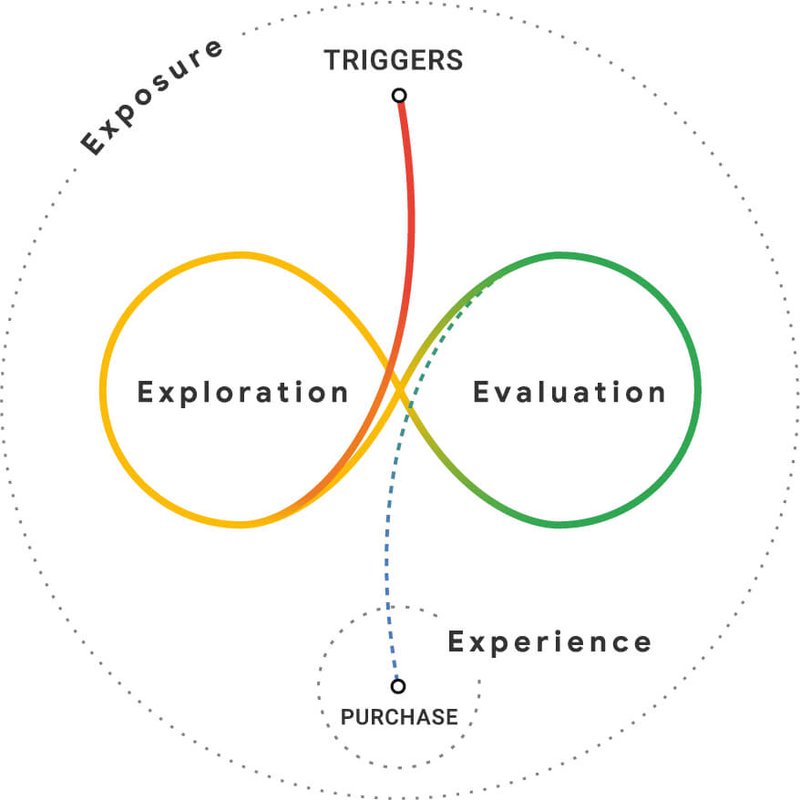[Interview] Shama Hyder on the Biggest Mistakes eCommerce Brands Make with PR
Here's our interview with the world's leading PR expert - Shama Hyder. Learn about the top strategies for getting press mentions and growing your online brand.
Updated November 6, 2024
![[Interview] Shama Hyder on the Biggest Mistakes eCommerce Brands Make with PR main image](https://entail.mayple.com/en-assets/mayple/61b21c7aa9ad4a8e9cb6a3a8_shamahyderinterviewmayple_1d59e4bf94d80a4f530b57f6f9bd5842_2000-1699776086626.png)
PR (public relations) is one of the most elusive and mysterious of marketing channels. And yet, it’s absolutely crucial for any eCommerce brand that wants to go big.
For this installment of our Host the Pro Series, we sat down with the amazing Shama Hyder. She’s the founder and CEO of Zen Media, a PR firm. She’s been named the “Zen Master of Marketing” by Entrepreneur Magazine and recognized as one of the top 30 under 30 entrepreneurs by Forbes.
In our talk with Shama, we uncovered a ton of valuable insights about PR for eCommerce. We talked about how to build relationships, the biggest mistakes brands make with PR, how PR fits in with your customer journey, and even a cute story about Katherine Hepburn.
Here’s the video of the interview, and the script is below.
Why is PR important for eCommerce brands?
“PR is important only if you want to build trust with your customers. It's funny because I think PR for the longest time was ‘nice to have’. Media relations and PR were just a nice perk.
A lot of times companies felt like once they get to a certain point then they can look into it. But these days we know that's just not true. You only have to look at how many touchpoints someone needs to buy.
Forester just released some research and they shared that in 2017, for example, it took 17 touchpoints or interactions for someone to buy your product. And now it's 21. So that number is going up.
We also know that trust is continuously going down. People are more cynical these days, they don't look at something and say ‘oh! I'm so excited to buy it’. Usually, they think ‘what's the catch? Are these reviews real? Is this company going to deliver?’
Also if you were ever competing with Amazon or if you’ve got a brand on Amazon, you're trying to build up your own brand, as so many brands have realized, Amazon is a great platform, but at the end of the day, it's the Amazon brand. And what you want to do is build your own brand. So from that perspective, PR becomes essential.
PR allows you to tell your brand story
We work with many different clients and we do a lot of work in the B2B tech space. And they all want to one day exit or they have already a game plan. They keep trying to position themselves because they know that today it's not just about the product. It's not just about the service.
It's the story that you tell, it's the story your customers get to tell about that product, about that service, how they feel about it. And so for all those reasons, PR becomes pretty crucial for telling your brand story.
PR is a key component of your marketing funnel
When PR is done well, when media relations are done well - they become a key component of your marketing funnel. It's the demand that you're generating. It's the awareness. You could have the best product in the world, but if nobody knows about it, then you're not going to get any customers.
PR is also about the long game. In advertising, when you put an ad out, you pay, you get clicks, you have a certain percentage of conversion. PR is not as direct. It's not like someone reads an article and you're paying for that. Each action becomes a part of an ecosystem, a collection of interactions with the brand that hopefully lead to a conversion.
Is PR the right channel for my brand?
I don't think PR is right for every brand. I think for someone who feels like they are not in it for the long haul and by long haul, I mean years and years. If they are not playing the game, like if you don't care about building your brand, then it's not as important.
If all you care about is selling this supplement, for example, and you're happy driving ads and then you don't need PR.
A lot of times we see is CEOs or entrepreneurs and they say: ‘listen, this isn't my only baby. I want to go on to do more board mem you know, I want to be on boards or I want to establish myself using this company’. So then PR helps them attract more opportunities.
Part of the benefit of doing PR is that it leads to other opportunities. In business, if you think about it, that's really what you're after is more opportunities to grow, to get more market share. But you've got to have that long-term mindset for it to be able to play in that realm.
What’s an example of PR in eCommerce?
There are so many eCommerce brands that have done a great job in PR, in building a brand, and media relations have to be a key part of that. Look at a brand like Yeti. This is a brand that sells high-end coolers, but at the end of the day, it's a cooler that you put your drinks into.
For an eCommerce brand, the thing that's differentiates you is your brand. For example, people don’t ask for batteries, they ask for Duracell or Energizer. Consumers shop for Kleenex, not for facial tissue.
And part of it is because these brands have invested in themselves over time. They have become household names, they are the category leaders. So PR is ideal for someone who wants to be the market leader, who wants to be out there and reap those benefits. It's not for someone who's looking to get an article published and then thinks it will cause a rush of traffic to their site.
What is digital PR?
Digital PR has a lot of the same components that traditional PR has. PR stands for public relations but the ‘public” is broad. It could include your media, your shareholders, your stakeholders, your investors, your influencers, and so on.
The media channels have so rapidly changed. If you look at media relations, it's no longer traditional journalists at desks. In the past, you could have desk-side meetings, all of that's changed today.
It's much more how you're connecting with people. Who's got an audience that you can leverage to get your message out there. And that's key to keep in mind for any brand out there.
What type of PR should brands use?
The type of PR eCommerce brands should use depends on the product.
If you have a consumer product in the nutrition space, for example. You can have multiple publications that deal with nutrition, but then let's say you have a really good founder story. There are great entrepreneurial elements to that. So there's the consumer-side press and there's business-side press.
What you're looking for is a holistic effort to increase your visibility and credibility. Because let's face it, we don't trust what companies say. We trust what other people say, we trust third-party verification. It's because if everyone says, I'm the best, I'm the best.
When you go into a marketplace, you're bombarded with advertising and you don’t know who to believe. That’s where third-party credibility and validation come in and that’s what PR helps with for eCommerce brands.
I always say, look for the folks that walk their talk. And one of the things that we at Zen Media have done really well is we walk our talk, we get a lot of clients who say, do for us what you've done for you guys.
And that's great.
I don't like preaching, but we're not practicing. Right. So if you go to our blog, you'll see content there. If you see the press page, we talk about ourselves and we land ourselves media too.
Every eCommerce brand has to find their balance of consumer and business-side press but also have a good product and a good value proposition.
Are influencers a type of PR?
Influencer marketing is a huge part of PR. So much of our work right now, almost 50%, is influencer-related. It works in tandem because the idea of media is reach, visibility, and credibility. And influencers can give you that.
We've had great success with influencers. They're not necessarily bound by traditional journalist protocols so that gives them more creativity. You can do more fun stuff.
I remember we did a video for a client of ours where we teamed up with a YouTube influencer and did a slime challenge. It was so nicely integrated because, within that slime challenge, we incorporated the client and a call to action.
With influencers, it takes a little more strategic effort to create a successful campaign. You have to find out their audience demographic, which channels they thrive on, and many other factors. Some influencers are great on Instagram. Others are great on YouTube.
PR helps with the “Messy Middle” of the customer journey
When you work with influencers, you can't expect that they're going to put out a piece of content and you’ll immediately see a barrage of sales. It doesn't work that way.
Today, the consumer journey is much more complex and filled with a variety of digital interactions. A user might come and see the influencer’s post about your brand. You may have a few people click right away to your site but more often you will have people researching you (the exploration phase).
They might look at the hashtags you’re using, they might look up your reputation. And that’s what Think by Google calls the ‘messy middle’.
Customer journeys are no longer linear, composed of a trigger and a purchase decision. It’s more a loop of evaluation and exploration. As these two merge, then the user makes their purchase.
Outside of this loop is the exposure.
So the more they see the brand the more likely they are to buy the product. The exposure is what essentially drives the user to enter this exploration-evaluation loop.
Last-click attribution doesn’t show you the full picture
So many marketers are hung up on attribution. If you're used to doing performance-based type of marketing, then a last-click attribution model works really well. But the world doesn't work that way.
And it's funny because if you ask these same people, how do you buy something? Chances are your friend told you about it. And then you heard about it from somewhere else. And then you put it in the back of your mind and then you read something on forums and you remembered it and bought it.
It takes so many touchpoints. And the problem with last-click attribution is that if at the end of this exploration-evaluation loop, the user purchases the product from a Google search then the brand attributes this sale to Google. When in fact, Google was just the gateway.
Google used to be the starting point of the consumer exploration phase. Now it's just the gateway.
Brands have to know how customer decisions are made and be aware of the fact that customers come from many different channels and through many different journeys. The focus for eCommerce companies should not be all focused on the immediate conversion but on tracking and improving the lifetime value of each customer.
PR helps increase the customer lifetime value (CLV)
So many of our eCommerce clients lose money on the first sale. That first sale is a loss. It doesn't matter where the user comes from. Their customer acquisition cost is so high. And that’s another advantage of PR that it reduces that customer acquisition costs, but you can't necessarily track that. But over time, as you build trust in the marketplace, you're going to see that effect.
For example, if an eCommerce brand sells pens. They might lose money on the first pen that a customer purchases. But the lifetime value of someone who bought a pen and then came back and purchased a mug or a phone cover, their LTV is far greater.
In PR and media relations for eCommerce companies, you have to play the long game. It’s not advertising and you can not confuse the two.
What are the common mistakes brands make with PR?
Mistake #1 - thinking that PR works like advertising
One is, thinking that PR works like advertising. It does not. Right. To think one article is going to get you all your sales is not the way it works. So you really have to have the right mindset.
Mistake #2 - expecting quick results
The other is expecting quick results. Yes, you will see progress right away. With our clients, we get hits right off the bat. Frankly, because we don't work with clients that we don't feel like we can place. So we're selective in that way, if your product is nothing special if there’s no special sauce, and no founder stories then we won’t work with you.
PR is great. And what we do best is we add sizzle to steak, but you can't manufacture steak. You have to have a good product.
You've your basics have to be sound. Expecting marketing or PR to be a band-aid for business issues, which is often the case, is a terrible mistake. It amplifies what you have.
If you've got a good product, PR can amplify it to be the best thing since sliced bread. If you have an average or poor product then you don’t want to amplify it until you improve it.
Mistake #3 - setting the wrong goals
It’s so easy to think that because your company is your world, it should be everybody's world.
So I tell people, you're not going to end up on the cover of Vanity Fair. Your business is not going to be on the front page of the New York Times. Does it happen? Yes. But are those good goals? Not really.
People think that getting on the cover of the New York Times is the thing that makes or breaks a brand. It’s doesn’t. The key to success is consistency.
I've been doing videos and podcasts and keynote speaking for the last 15 years. The challenge is as my agency grows I have to prioritize and say no to things. And I do stuff across the board. I do a lot of television, national television, NPR, Fox Business.
It’s easy for me to say no to smaller gigs but I practice what I preach. I think it’s important to say yes to every media opportunity that you can. If the audience fits your target audience and you can provide value, then it’s a good fit.
Mistake #4 - being too transactional and not building relationships
This is also really true of how certain leaders treat people. You see people who are very transactional and I think there's a very thick line between transactional and being efficient. You can still be efficient and say no to things.
I say no to things all the time, but it's not because I think they're too small or the outlet is not important enough. Everyone you encounter is important and if you can add value and have the ability and bandwidth to do so then I think you absolutely should.
There are so many times when you see companies that disregard a certain opportunity because it’s not the cover of some big magazine. And that's not how PR works.
You can tell the leaders, the famous CEOs, who know the name of the front desk folks, who know the janitor. These are the people that understand how this works, how relationships work.
Some of our best placements for clients have been because we followed these journalists all the way through their career.
And do you think they're going to take that call from us? Absolutely! Because they know we won't waste their time and because they worked with us in the past and we’ve built that relationship.
I think the challenge with eCommerce is that it can feel like it's not relationship-based. It can feel automatic. But behind every click is a human being and they're coming at it from their own lens. And so brands understand that then I think those are the brands that tend to do really well with PR.
What’s your biggest tip for brands that are just starting with PR?
My best tip is just to start. You’re going to learn and discover new things along the way. A piece of content that you thought would do really well could totally bomb and another piece that you thought was average could all of the sudden get a lot of attention overnight.
Another tip - find and come up with valuable things to share. For example, one of our clients is Adroll. They have a lot of data because they have over 20,000 customers, and they’re in the eCommerce business. With them, we can share data insight with reporters about the latest eCommerce trends.
Final tip - just be a friend. I think of PR like I think of friendship. And if you think about it broadly - ‘what makes for good friendship’? It’s that you provide value, you build a relationship. And in PR you have to be willing to build that relationship.
The story of how Katherine Hepburn got pitched
There's a great story about Katherine Hepburn. A reporter called her and said: ‘I would like to interview you’. And she said: ‘are you kidding me? I've got back-to-back movie shoots. It's not my job to do interviews’.
And he paused.
And on the other line, he said: ‘yes, I understand, but it is my job’. And she said: ‘I'll meet you downstairs in 15 minutes’.
Your job is not everybody's job, but if you can help people get what they're looking for, if you could share an insight that brings them value, then you’re golden.
Patience is a key to success in PR
I feel like what we do in PR is connect the dots. Sometimes it takes a minute to figure out what dots need to be connected. But the cool thing is when it starts to get going, when it starts to build momentum, it's unstoppable.
Just last week we got a call from a morning show here for a client that we pitched a year ago and it was in the producer's files for a whole year. Sometimes you put stuff out there, and nothing happens until a year later they get back to you and want you to come and be a guest on the show.
So you've got to get the wheels turning and just be open to those opportunities because they do come flooding in.
Recap
We hoped you loved this interview as much as we did. PR is not something you can do yourself. Reach out to us if you need some PR services. We will find the perfect PR expert for your needs.
And remember - stay in it for the long haul because PR isn’t like an advertising campaign that you can turn on and off. PR is where you really invest and commit to building your brand.







